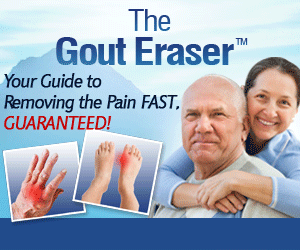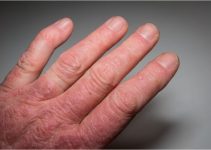
After pregnancy, a couple of women tend to experience pain in joints. If you have just become a mother and are experiencing this symptom, it may indicate the condition of postpartum arthritis. As a fact, during and after pregnancy, the body goes through several changes and this pain after delivering a baby is likely to leave you anxious and in irritation.
Well, the good news is that arthritis after pregnancy can be managed effectively. Read on to find out why this condition can occur and how you can manage its symptoms.
Causes
Those who had arthritis prior to pregnancy are likely to experience relief during pregnancy. This is because the symptoms may vanish, as the immune system may go off. However, after delivery, the arthritis symptoms can strike back.
After pregnancy, typically, the immune system turns to be hyperactive and surges the risk of getting an auto-immune ailment. One such ailment is rheumatoid arthritis.
Post pregnancy, the overactive immune system is likely to transmit signals of attacking or signals due to some foods. This can result in several allergies. Some women can even witness the symptoms of inflammation that can harm bones.
The specific causes of postpartum arthritis are unidentified yet. However, a few factors can surge its development risk, which are Polycystic Ovary Syndrome (PCOS), older age, genetics, and smoking.
Even the levels of hormones can contribute to the condition, though it is not clear how. A few hormones seem to increase the risk. According to some researchers, a higher level of prolactin or a reduced level of progesterone can increase the risk after birth.
Even the delivery timing seems to influence the onset of this medical condition. It has been observed that arthritis can occur in the initial two years after delivery and the highest possibility is during the first three months after delivery.
Symptoms
Early arthritis is first likely to affect your smaller joints like the ones in the toes and fingers. As the condition progresses, symptoms can reach bigger joints in the shoulders, knees, and wrists. Usually, in the case of rheumatoid arthritis, the symptoms will persist on both sides and in the same joints. Following are the signs and symptoms to observe:
- Stiffness, swelling, or tenderness in joints
- Chronic pain in joints
- Weakness
- Weight loss
- Fever
- Fatigue
These symptoms could be mild, medium, or severe. Further, the symptoms, at times, would stop or worsen (flares). It is vital to note that rheumatoid arthritis can affect even organs such as eyes and lungs and non-joint parts.
Suggested article: What Does Arthritis Feel Like?
Treatment
The first step towards the treatment of postpartum arthritis is to consult a doctor who is into diagnosing and handling autoimmune ailments. There are specialists called orthopedists for osteoarthritis and rheumatologists for rheumatoid arthritis.
It is wise to consult the corresponding specialists, as the symptoms are analogous to those of other diseases. A specialist will coordinate with you to diagnose the condition correctly and plan for the most suitable treatment.
The treatment plan will cover both medicines and self-management approaches. The prescribed medications are such that they tend to decelerate the further progress of arthritis after pregnancy and keep joint deformity at bay.
Side by side, the affordable self-help aids that the specialist prescribes are known to enhance joint function and interrupt disability. Some of these aids are physical activity (exercises), maintaining weight via a healthy arthritis diet, quitting to smoke, and joining a self-management knowledge session.
Can you prevent arthritis after pregnancy?
Sadly, no! Right now, nothing has been identified that can help in preventing this condition. Nevertheless, early treatment action and self-help aids can relieve the symptoms and keep long-term joint damage at bay.
Can postpartum arthritis result in other complications?
The possibility of complication surges only if you leave the condition untreated. If so, the chances of a disability and facing other ailments such as diabetes and heart disease become high. Moreover, the advancing condition can make it challenging for you to get involved in daily activities.
Conclusion
Although difficult, it is essential to treat postpartum arthritis while taking care of your baby. Staying informed about this condition can help you in relieving its symptoms more effectively.
Suggested articles:
– How To Prevent Arthritis – Arthritis Risk Factors and Its Prevention
– Reflexology for Arthritis – Can Reflexology Help With Arthritis?
– Arthritis Vs Arthralgia – Everything You Need to Know
– Pisotriquetral Arthritis – Causes, Symptoms and Treatment
– Arthritis and Weather – How Does Weather Affect Arthritis?
– Hypertrophic Arthritis – Causes, Symptoms and Treatment
– Rheumatoid Arthritis Nodules – Risk Factors, Diagnosis, Treatment
The Gout Eraser™: The all-natural guide for permanent gout removal
The Gout Eraser™ is a short, to the point guide on how to reverse gout symptoms without ever leaving your home. The guide goes into extensive detail on exactly what you need to do to safely, effectively and permanently get rid of gout, and you are GUARANTEED to see dramatic improvements in days if not hours.
To learn more about The Gout Eraser™ system, check out the following free video presentation: The Gout Eraser™





